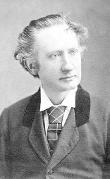This 'Grand Musical Fairy Extravaganza' is described in the ^Age^(http://www.austlit.edu.au/austlit/page/C278194) as being 'as old as the hills, as old as our grandfathers and grandmothers [and] a chef d'ouvre of the "Child's Own Book" imprinted indelibly in the memory'.
The storyline follows the adventures of three sisters who disguise themselves as men. One of the women, Myrtina, obtains the goodwill and assistance of Fairy Favourable and assumes the name and arms of Fortunio. During the course of the story, she battles a dragon and becomes 'confounded by the feats and powers of the seven gifted servants.' The burlesque ends 'in the most approved manner [when Fortunio is] revealed in his true character, as the fair, the chaste, the inexpressive, [and thus] espouses the King Alfourite' (Age 28 December 1857, pp.5-6).
The Argus theatre critic records that the production contained 'local hits, songs and adaptations', with the topicalities aimed at subjects such as the Land Bill, the City Council, and the squatters (28 December 1857 p.5). The Age review also notes that the local hits were occasionally telling. 'There is a song about the Yan Yean', writes the critic, 'and another about the Land Bill, the latter of which sung, with great point by Miss Joey, was re-demanded. The City Council, the squatters and other celebrities got their share of the wit of the piece, and in turn elicited loud laughter' (p.6).
While the authorship of the localisations remains uncredited, George Fawcett likely had a hand in their creation. Although his name is not mentioned in any reviews for this production, Fawcett was engaged by the Gougenheims throughout much of their Princess's season, and is known to have adapted and localised material for his own role in their production of Beauty and the Beast.

